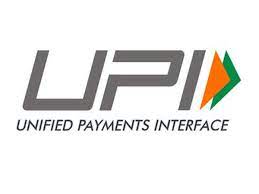India’s digital payments ecosystem continues to surge, with the Unified Payments Interface (UPI) leading the charge. Fueled by the festive season and strategic policy reforms, UPI has set new records, cementing its role as the backbone of the country’s financial technology (FinTech) landscape.
UPI: Dominating Transactions in India
The momentum of UPI accelerated sharply in October 2025, driven by major festive shopping periods like Diwali, along with supportive economic conditions, including Goods and Services Tax (GST) rate cuts.
- Average Daily Transaction Value (October 2025): ₹94,000 crore (+13% vs. September)
- Average Daily Transaction Volume: 695 million transactions (+6% vs. September)
- Monthly Milestone: Industry projections suggest the total monthly transaction value may exceed ₹28 lakh crore, potentially breaking previous records.
- Peak Day: On Diwali eve (October 18), UPI recorded a record 754 million transactions worth over ₹1.02 lakh crore in a single day.
UPI now accounts for nearly 85% of all digital transaction volumes in India, though its share in transaction value remains lower due to the predominance of low-value retail payments.
Comparing UPI with Other Payment Systems
While UPI dominates in volume, high-value payment systems like RTGS continue to handle the largest transaction sums:
| Payment System | Share by Volume (H1 2025) | Share by Value (H1 2025) | Typical Use Case |
|---|---|---|---|
| UPI | 84.8% | 9.1% | High-volume, low-value retail payments |
| RTGS | 0.1% | 68.7% | High-value corporate/interbank transfers (> ₹2 lakh) |
| NEFT | 3.9% | 15.1% | Mid-to-high value bulk transfers |
Credit card usage has risen significantly during the festive season, particularly for e-commerce purchases, while debit card and prepaid instrument volumes have declined, reflecting changing consumer preferences.
High-Value UPI Transactions Made Easy
A key driver of UPI’s growing influence is the NPCI’s September 2025 revision of transaction limits for select high-value categories:
- Person-to-Merchant (P2M) Payments: Up to ₹5 lakh per transaction
- Daily Cumulative Limit: ₹10 lakh for categories such as capital markets (investments), insurance premiums, government e-marketplace (GeM), and travel & tourism
- Credit Card Payments: ₹5 lakh per transaction, ₹6 lakh daily limit
Note: Person-to-Person (P2P) transfers retain the standard daily limit of ₹1 lakh. Users are advised to update their UPI apps to utilize the new limits.
This enhancement simplifies large payments for mutual fund investments, insurance premiums, government taxes, high-value flight tickets, and credit card bills, providing a fast, 24×7 alternative to traditional NEFT and RTGS transfers.
Regulatory and Technological Advancements
The Reserve Bank of India (RBI) and NPCI have implemented measures to strengthen UPI’s infrastructure:
- Balance Check Limit: Maximum of 50 balance inquiries per day per UPI app to reduce API overload
- Wallet Interchange Fees: 0.5%–1.1% applied to merchants for payments above ₹2,000 via Prepaid Payment Instruments (PPIs), while personal P2P transfers remain free
- International Expansion: UPI’s cross-border integration continues, including partnerships with Singapore (PayNow), UAE, and France
- Future Authentication: Plans are underway to introduce PIN-free, biometric-based UPI transactions for small payments
The Road Ahead
UPI’s growth demonstrates India’s leadership in digital payments and public digital infrastructure (DPI), built on the Jan Dhan-Aadhaar-Mobile (JAM) trinity. The platform is now shaping global FinTech standards by offering transparency, speed, and convenience for millions of users.
With increasing adoption, higher transaction limits, and international expansion, UPI is not just a payment system—it is the engine of India’s digital economy, seamlessly integrating millions of users, merchants, and financial institutions across the country.

